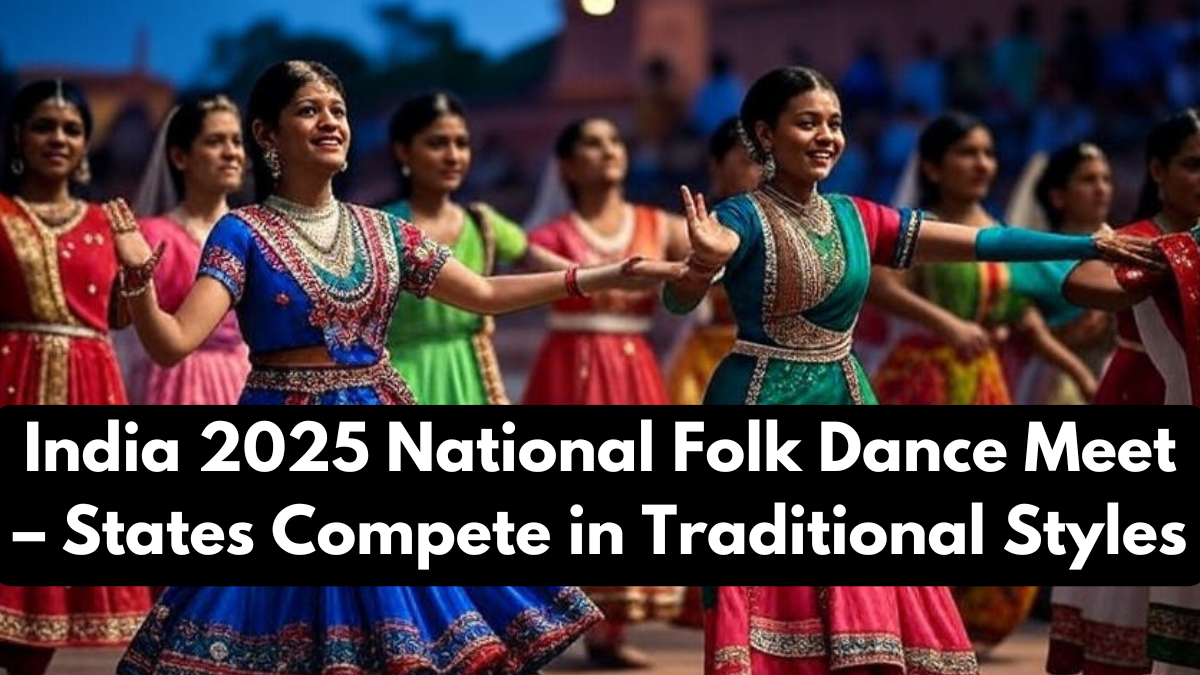The much-awaited India Folk Dance Meet 2025 is set to bring together vibrant cultures, music, and performances from across the nation. This national-level event is more than just a dance competition; it’s a living museum of Traditional Arts, where centuries-old stories and practices are showcased through graceful steps, colorful costumes, and rhythmic beats. The festival will see participation from nearly every Indian state, offering audiences an immersive experience of regional diversity and heritage.

The Importance of India Folk Dance Meet 2025
The India Folk Dance Meet 2025 plays a crucial role in reviving and preserving regional dance forms that often remain underrepresented in mainstream platforms. Folk dances are not only artistic expressions but also cultural archives, carrying tales of festivals, rituals, harvests, and daily life.
By promoting Traditional Arts, this meet ensures that younger generations remain connected to their roots. It also encourages communities to continue practicing and innovating their dance styles while staying true to their cultural identities.
Key Highlights of the Event
This year’s folk dance meet will showcase a variety of performances ranging from tribal dances of the northeast to devotional traditions of the south. Each state will present its most iconic and culturally significant folk dance.
Some highlights include:
- Bhangra and Giddha from Punjab representing harvest celebrations.
- Garba and Dandiya Raas from Gujarat performed during Navratri.
- Lavani from Maharashtra blending rhythm and storytelling.
- Chhau from Jharkhand and West Bengal with martial influences.
- Yakshagana from Karnataka combining drama and dance.
- Bihu from Assam celebrating spring and new beginnings.
These performances highlight the true strength of Traditional Arts as they preserve the cultural mosaic of India.
Major Folk Dances Featured in 2025
| State/Region | Folk Dance | Theme/Significance |
|---|---|---|
| Punjab | Bhangra, Giddha | Harvest celebrations |
| Gujarat | Garba, Dandiya | Devotion to Goddess Durga |
| Maharashtra | Lavani | Storytelling through rhythm |
| West Bengal/Jharkhand | Chhau | Martial and mythological tales |
| Karnataka | Yakshagana | Dance-drama based on epics |
| Assam | Bihu | Spring festival and fertility |
| Rajasthan | Ghoomar, Kalbelia | Royal traditions and nomadic culture |
This table makes the India Folk Dance Meet 2025 a ready reference for anyone wishing to explore the diversity of Traditional Arts.
Promoting Traditional Arts and Tourism
The government and cultural bodies see the India Folk Dance Meet 2025 as more than entertainment. It is part of a larger initiative to promote cultural tourism and create economic opportunities for performers, artisans, and local communities. Tourists visiting India during this time can enjoy authentic performances, purchase handcrafted costumes, and even participate in workshops.
By focusing on Traditional Arts, the event not only preserves culture but also strengthens the bridge between tradition and modern appreciation. This also ensures sustainable cultural tourism, where folk dances become both an art form and a livelihood.
Conclusion
The India Folk Dance Meet 2025 promises to be a grand celebration of unity in diversity. By showcasing the wealth of Traditional Arts, it not only entertains but also educates audiences about India’s cultural depth. From rhythmic beats of Bhangra to the grace of Ghoomar, each performance is a tribute to India’s living heritage. For both domestic and international audiences, this event is a reminder that India’s traditions are timeless, resilient, and ever-inspiring.
FAQs
What is the India Folk Dance Meet 2025?
It is a national festival showcasing folk dance performances from across India, highlighting cultural diversity.
How does the event promote Traditional Arts?
By providing a stage for regional dances, it helps preserve ancient traditions and ensures they remain relevant for future generations.
Which states are participating in the India Folk Dance Meet 2025?
All major Indian states are participating, with each presenting their iconic folk dance such as Bihu, Garba, Lavani, and Chhau.
Can tourists attend the event?
Yes, the festival is open to domestic and international tourists, offering performances, workshops, and cultural exhibitions.
Why is the India Folk Dance Meet important for cultural tourism?
It boosts local economies, supports artists, and attracts global attention to India’s Traditional Arts.
Click here to learn more